Tree identification UK trees – bark and leaves
Tree identification is a fantastic skill and its very satisfying being able to name the trees you come across in a forest in the UK.
It is also a great way to occupy your family on walks through the UK countryside.
Identifying trees from the clues nature gives you is also a fun game that encourages curiosity in children. Whether you want to be able to recognise trees out of curiosity or to teach your kids, this guide will simplify tree identification so that anyone can do it.
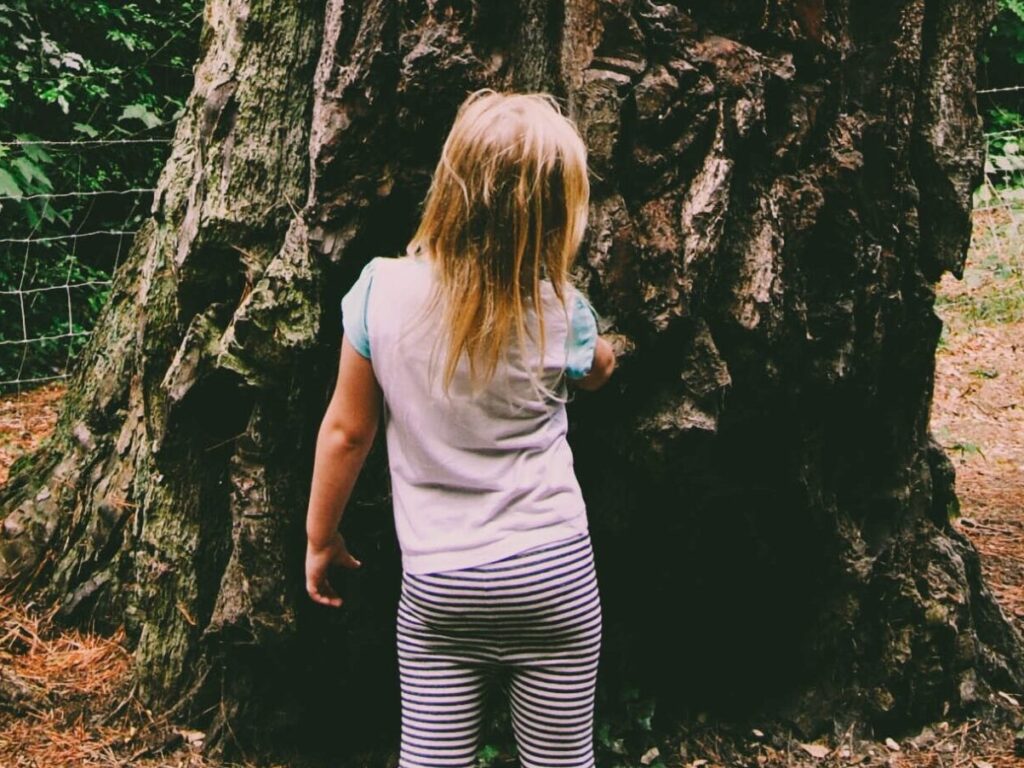
Different types of tree
Trees in the UK can be either coniferous or broadleaf. Broadleaf trees have flat, (and as the name suggests) broad leaves that are often deciduous- meaning they turn orange and fall off in autumn.
Common broadleaf trees include oak, ash and birch.
Coniferous trees have needles or scales and normally produce cones, and most (but not all) coniferous trees are evergreens.
Although most coniferous trees aren’t actually native to the UK, you have probably come across them, as the pine, fur, cypress and spruce families.
Due to the fact that most retain their foliage, they are something to look out for when camping in the cooler months and searching for a sheltered camping pitch.
For more tips on how to stay warm and enjoy the cooler camping experience, check out our guide to Spring and Autumn camping.

Size and shape of trees- general identification
This is the first thing to consider, as some trees have a distinctive shape which means they can be identified from the distance. The crown of a tree is measured from where the branches start, and it differs depending on the tree species.
For example silver birch trees have a sparse, light crown whilst for oak it is wide and spreads out (as shown below).
Some species like the hornbeam are sometimes cut at the base, which means they have multiple stems instead of one trunk. T
he shape of the branches can also be used to identify the tree, for example ash has distinctive branches that grow towards the ground and then curve upwards.

Bark types
As a tree ages, bark develops and changes its appearance. When you’re looking at the bark of a tree, observe its texture (it could be tough and solid with ridges, or thin and flaky), its colour and the markings on the bark.
Probably the easiest to identify, birch has white bark with thin layers.
Sessile oak has grey deeply cracked bark that becomes more pronounced as it ages.
Cherry also has bark that is smooth and dark reddish brown, with horizontal stripes, shown below.

How to identify the leaves of plants
Broadleaves can be separated into simple and compound leaves.
Simple leaves are undivided next to the central leaf vein, such as in maple, elm and oak trees.
Whereas compound leaves are divided into several leaflets, such as ash and hickory.
Compound leaves can be further divided into two categories, pinnate and palmate.
Pinnate leaves, such as elder and rowan (shown below), have leaflets attached in pairs along a central offshoot.

Whilst palmate leaves are palm shaped (as the name suggests) with leaves growing from a central point, for example on the horse chestnut tree.
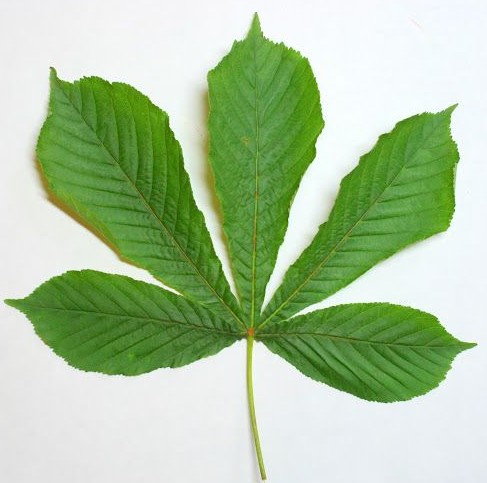
With deciduous trees, leaves change dramatically depending on the season. Species such as field maple and guilder rose often transform from green to an intense orange or red.
The shape of the leaf can also help to identify the tree, such as the rounded leaves of aspen, or the long trailing leaves of willow trees.
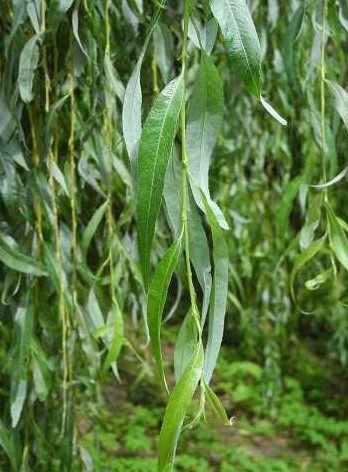
Needles and scales are also types of leaves, and they can be used to identify conifers.
Cedars and larches have needles in clusters of 20-45.
Pine trees such as Scots pine have long needles in clusters of 2,3 or 5.
Yew has characteristically flattened needles on green shoots.
Fir and spruce trees also have needles, whilst cypress trees have scale-like leaves instead of needles, as shown below.
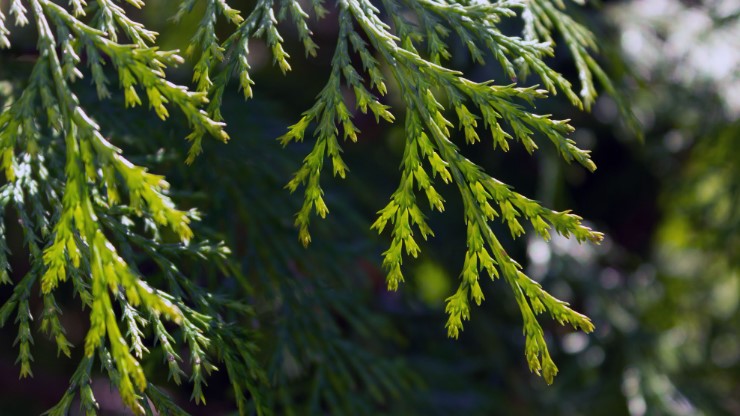
Flowers, fruit and buds on trees
Most trees only flower for a brief period of the year, but in the spring or summer months flowers are a great way to identify trees.
Many broadleaf trees have white flowers. You can identify them depending on the month that you see the flowers. For example a single white flower in February could be seen on a cherry plum, whilst a single white flower in April could be a blackthorn or snowy mepsil.
Hawthorn and rowan trees have many flowers from one bud in a flat cluster.
Other trees also have distinctive flowers- such as ash which has deep purple flowers, and hazel which has male flowers that hang down in long catkins and female flowers that are tiny and vivid pink.

The fruit of broadleaf trees varies a lot depending on the species.
For example elder and cherry laurel have black berries and rowan has red berries, whilst sycamore and ash have thin papery samaras as their fruit.
Sloes, plums and cherries all have fleshy fruit with a single seed inside.
The fruit of willows and birches takes the form of catkins, which dangle from the tree and form a feathery mass of seeds in summer.
Oak trees also have characteristic acorns that are produced in autumn.
In winter, one of the most reliable ways to identify deciduous trees is by looking at their buds. The buds can be opposite each other on the stem (horse chestnut, spindle, elder, ash), or alternate on the stem (willow- shown below, poplar, alder, birch).
They can also coil alternately around the stem (oaks, aspen and blackthorn).
Pear, apple and rowan have hairy buds at the end of their stems.
At the end of cherry and oak stems there are also clusters of buds.
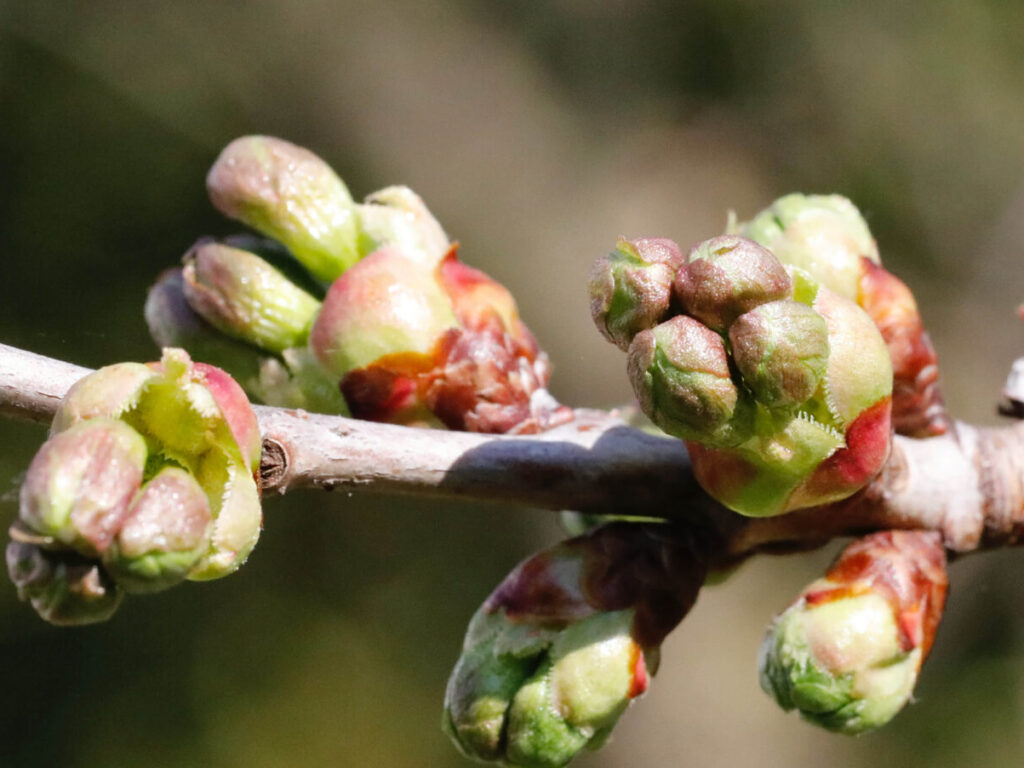
You could also have a read on our guide to foraging to see what trees provide free food when out and about in the British countryside.
There are lots of apps you can download that will help you identify UK trees. The woodland trust app lets you select the characteristics of the tree and then gives suggestions for its name, helping you to learn what to look for next time.
You can download this here for free for your android and iphone.

Being able to recognise tree species as you walk through the forest is a great way to teach your kids about biology and the natural ecosystems that surround us.
For some more ways to teach your kids in the forest, check out Wild Schooling. There is something especially lovely about recognising tree species as you walk through the incredible woodland in the UK.
Here’s me signing out and thank you so much for reading.
Lily Crooke / Environmental and Recreational author
